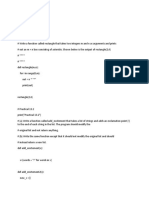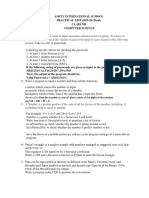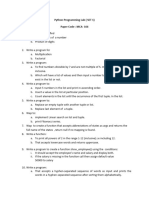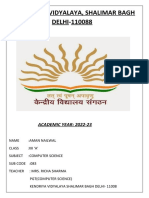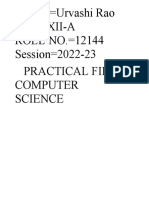0% found this document useful (0 votes)
11 views5 pagesProgram
The document contains several practical programming exercises in Python, including generating random numbers within a range, checking if two strings are of the same length, finding the maximum and minimum of four numbers, calculating the sum and product of the first ten numbers using variable-length arguments, and implementing a simple login system with a default username. Each exercise includes a function definition and example output. The exercises are designed to demonstrate various programming concepts and functionalities in Python.
Uploaded by
cshekhar60836Copyright
© © All Rights Reserved
We take content rights seriously. If you suspect this is your content, claim it here.
Available Formats
Download as PDF, TXT or read online on Scribd
0% found this document useful (0 votes)
11 views5 pagesProgram
The document contains several practical programming exercises in Python, including generating random numbers within a range, checking if two strings are of the same length, finding the maximum and minimum of four numbers, calculating the sum and product of the first ten numbers using variable-length arguments, and implementing a simple login system with a default username. Each exercise includes a function definition and example output. The exercises are designed to demonstrate various programming concepts and functionalities in Python.
Uploaded by
cshekhar60836Copyright
© © All Rights Reserved
We take content rights seriously. If you suspect this is your content, claim it here.
Available Formats
Download as PDF, TXT or read online on Scribd
/ 5
